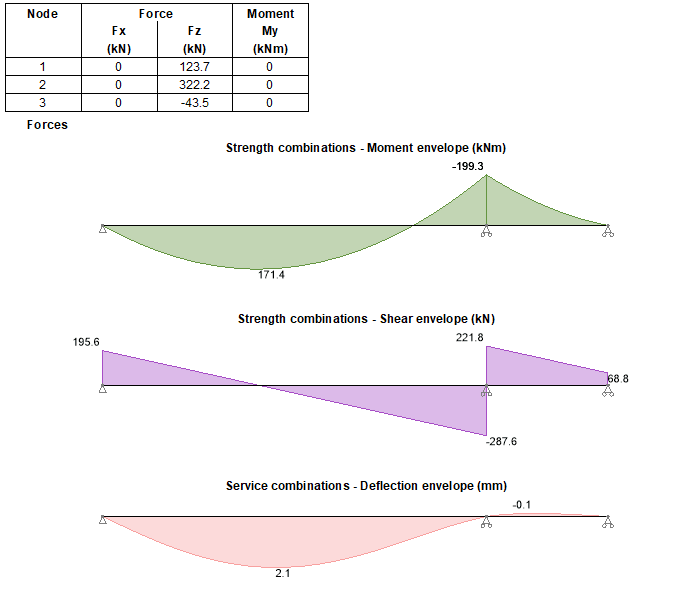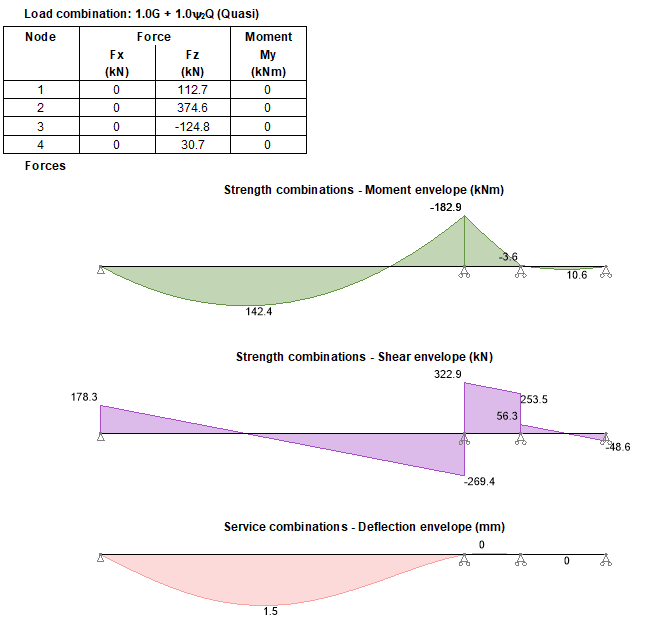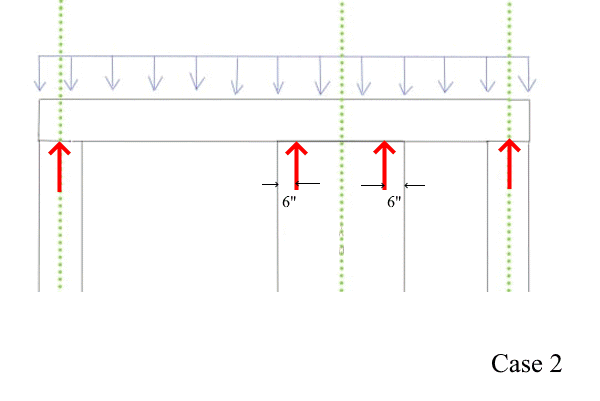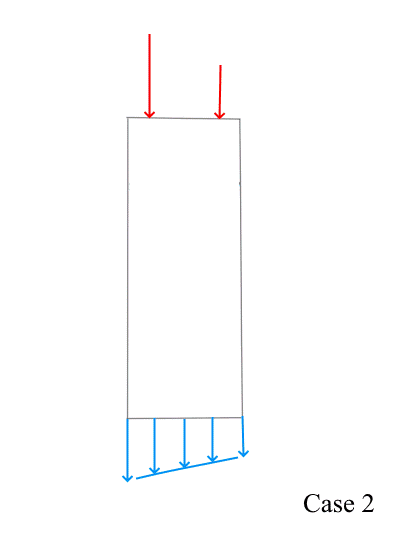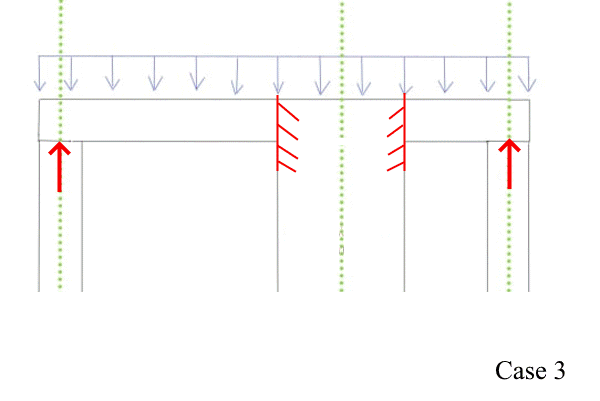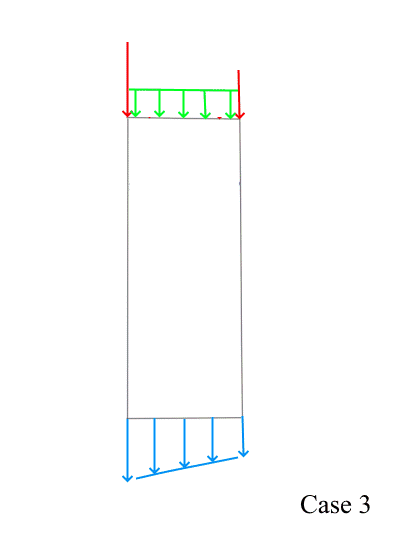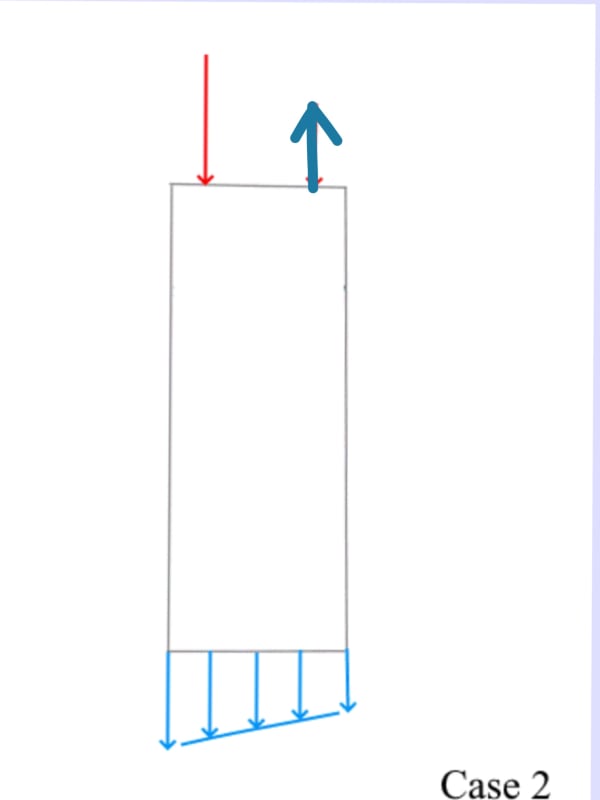Hi there,
I'm working on the design of supports for a transfer beam that is carrying two storeys above. The loads are quite large, so I am trying to see if there are ways that I can be a bit less conservative with the analysis model.
How should I be analysing a structure with a continuous support that is quite long (3' or 0.914m)?
Analysing the structure with the support directly in the center may be too conservative, as it would be increasing the clear span of the transfer beam (increasing the overall loads on the supports). Should I also be putting a support at the start of the 0.914m wall and at the end of the 0.914, wall (effectively putting in 3 supports for that mid wall?). What is best practice in a situation like this?
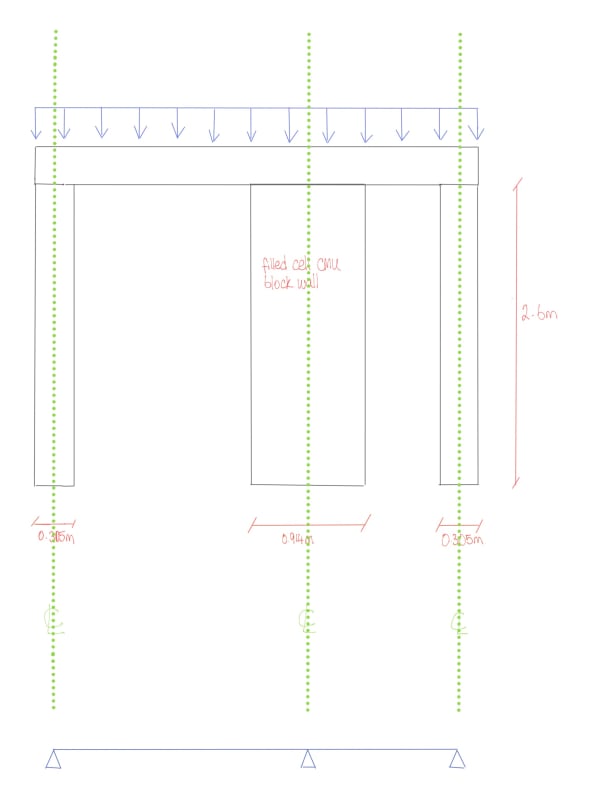
Also - I need to determine the UDL on the footing from the top point load reaction on the wall, so that the strip footing can be designed. Is what is shown in the sketch below the correct approach to calculating the footing UDL from the point load?
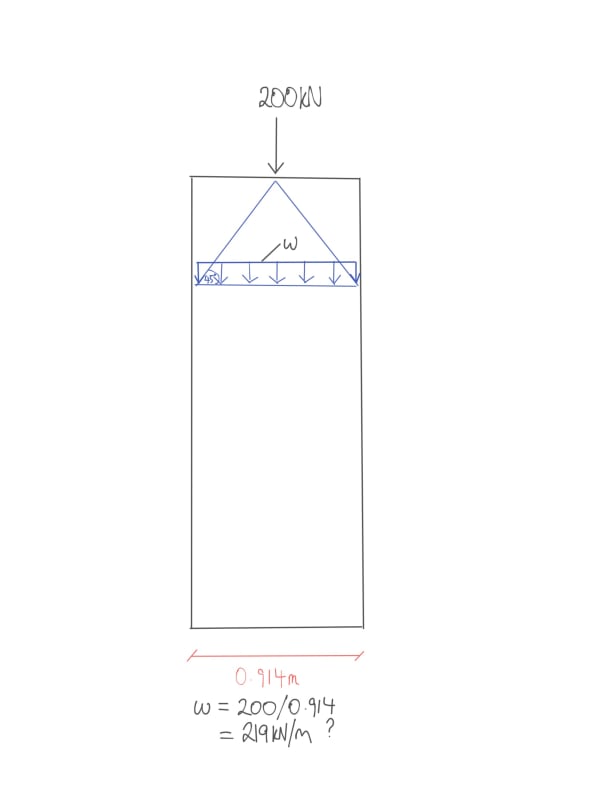
I'm working on the design of supports for a transfer beam that is carrying two storeys above. The loads are quite large, so I am trying to see if there are ways that I can be a bit less conservative with the analysis model.
How should I be analysing a structure with a continuous support that is quite long (3' or 0.914m)?
Analysing the structure with the support directly in the center may be too conservative, as it would be increasing the clear span of the transfer beam (increasing the overall loads on the supports). Should I also be putting a support at the start of the 0.914m wall and at the end of the 0.914, wall (effectively putting in 3 supports for that mid wall?). What is best practice in a situation like this?

Also - I need to determine the UDL on the footing from the top point load reaction on the wall, so that the strip footing can be designed. Is what is shown in the sketch below the correct approach to calculating the footing UDL from the point load?




